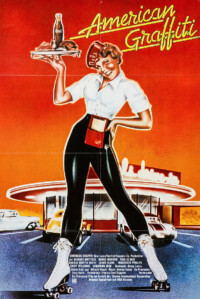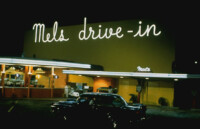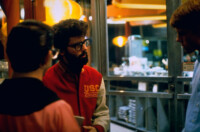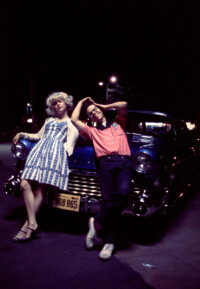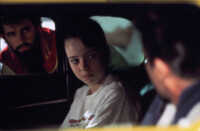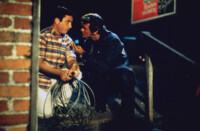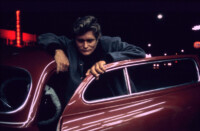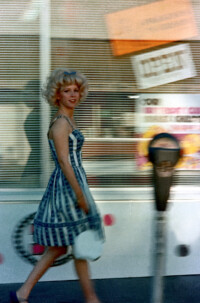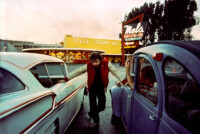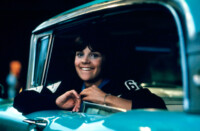
It all began with a heartfelt coming-of-age tale spun by the visionary George Lucas. Back in 1971, Lucasfilm was merely a name inked on a legal document, but within that name, a purpose was forged. The young filmmaker sought a company to back his next project, having previously experienced the tribulations of an independent studio, American Zoetrope, that teetered on the brink of financial ruin after the release of his first feature film, THX 1138.
As the fate of Zoetrope hung in uncertainty, Lucas decided to venture out on his own and establish Lucasfilm, Ltd. It became the vessel to carry his independent films, and thus, the groundwork was laid for his next endeavor. Encouraged by Francis Ford Coppola, Lucas was challenged to create something “warm and funny” after THX’s bold, futuristic vision. And so, from the depths of his Modesto adolescence in California’s Central Valley, the concept of American Graffiti was born.
Collaborating with his friends Gloria Katz and Willard Huyck on the screenplay, Lucas envisioned a heartwarming coming-of-age story unfolding on a single evening in the summer of 1962, the year he graduated from high school. The tale revolved around two friends, Steve (Ron Howard) and Curt (Richard Dreyfuss), who were set to leave for college the next morning. One hesitant to depart the comfort of their small town, the other eager to explore new horizons. Throughout the night, both characters faced pivotal decisions that would shape their futures.
Interwoven with their stories were humorous misadventures featuring unforgettable characters like Steve’s strong-willed girlfriend, Laurie (Cindy Williams), the legendary radio DJ Wolfman Jack (playing himself), the enthusiastic Terry the Toad (Charles Martin Smith), and his newfound friend Debbie (Candy Clark). Additionally, the film introduced us to the popular hot rodder John Milner (Paul Le Mat) and a remarkably wise teenager named Carol (Mackenzie Phillips). The streets also saw the presence of an antagonist, the rival hot rodder Bob Falfa (Harrison Ford), on the hunt for Milner.
Executive-produced by Francis Ford Coppola, American Graffiti underwent a whirlwind production in the summer of 1972, with most scenes shot at night. Initially set in San Rafael, the production swiftly shifted to the neighboring community of Petaluma. In between shoots, Lucas diligently edited the film with Verna Fields, his then-wife Marcia Lucas, and the sound designer Walter Murch. The esteemed filmmaker Haskell Wexler commuted from Los Angeles to collaborate on the cinematography, aiming to capture a visual style reminiscent of a vibrant jukebox.
The magic of American Graffiti lay in its ability to encapsulate a moment in time. It arrived during the pinnacle of rock ‘n roll’s first era, a period where cruising and street racing captivated teenagers across small towns everywhere. The film also coincided with significant cultural and socio-political transformations, from the emergence of the British Invasion in rock music to the civil rights movement and the Vietnam War. In 1973, when American Graffiti premiered, the nation was transfixed by the Watergate trials, which kept Americans glued to their television screens.
The movie sparked a wave of nostalgia in popular culture, inspiring productions like Grease and television shows like Happy Days. However, American Graffiti wasn’t a wistful eulogy for a bygone era. Lucas ingeniously crafted a tale that transcended its time, resonating with audiences across generations. Its allure extended beyond music, teen fashion, and souped-up cars; it was funny, endearing, and inspiring to anyone exploring life’s pivotal choices. To Lucas’s delight, letters poured in from young viewers moved by the film, influencing his next venture, a space fantasy crafted specifically for young hearts: Star Wars.
After a pivotal industry screening of American Graffiti, 20th Century Fox executive Alan Ladd, Jr. decided to support Lucas in his next project, which eventually led to the creation of Star Wars. Gary Kurtz, the producer of Graffiti, joined Lucas once again to spearhead the new venture. The earnings from the film enabled Lucas to purchase Lucasfilm’s first official headquarters, a grand Victorian house in San Anselmo, and establish Industrial Light & Magic, a groundbreaking visual effects division essential to bringing Star Wars to life.
Distributed by Universal Pictures, American Graffiti opens with the iconic sight of the studio’s spinning globe, accompanied by the soft hum of a radio tuning into Wolfman Jack’s program. Neon green letters spell out “A Lucasfilm Ltd / Coppola Co. Production” as the film’s first title, unveiling the world to the Lucasfilm name for the first time. Back in 1971, the company’s formation garnered little fanfare, with no press releases or grand announcements. Thus, American Graffiti became the world’s introduction to Lucasfilm.
“The film is about teenagers moving forward and making decisions about what they want to do in life,” Lucas eloquently stated at the time, a sentiment that resonated with his young audience. “But it’s also about the fact that you can’t live in the past, which is part of the same idea. You have to move forward; things can’t stay the same; essentially that’s the point of the film.” These profound words encapsulated the heart and soul of American Graffiti, a timeless masterpiece that still warms hearts and fills souls with nostalgia, perplexity, and the enduring magic of youth, even half a century later.
